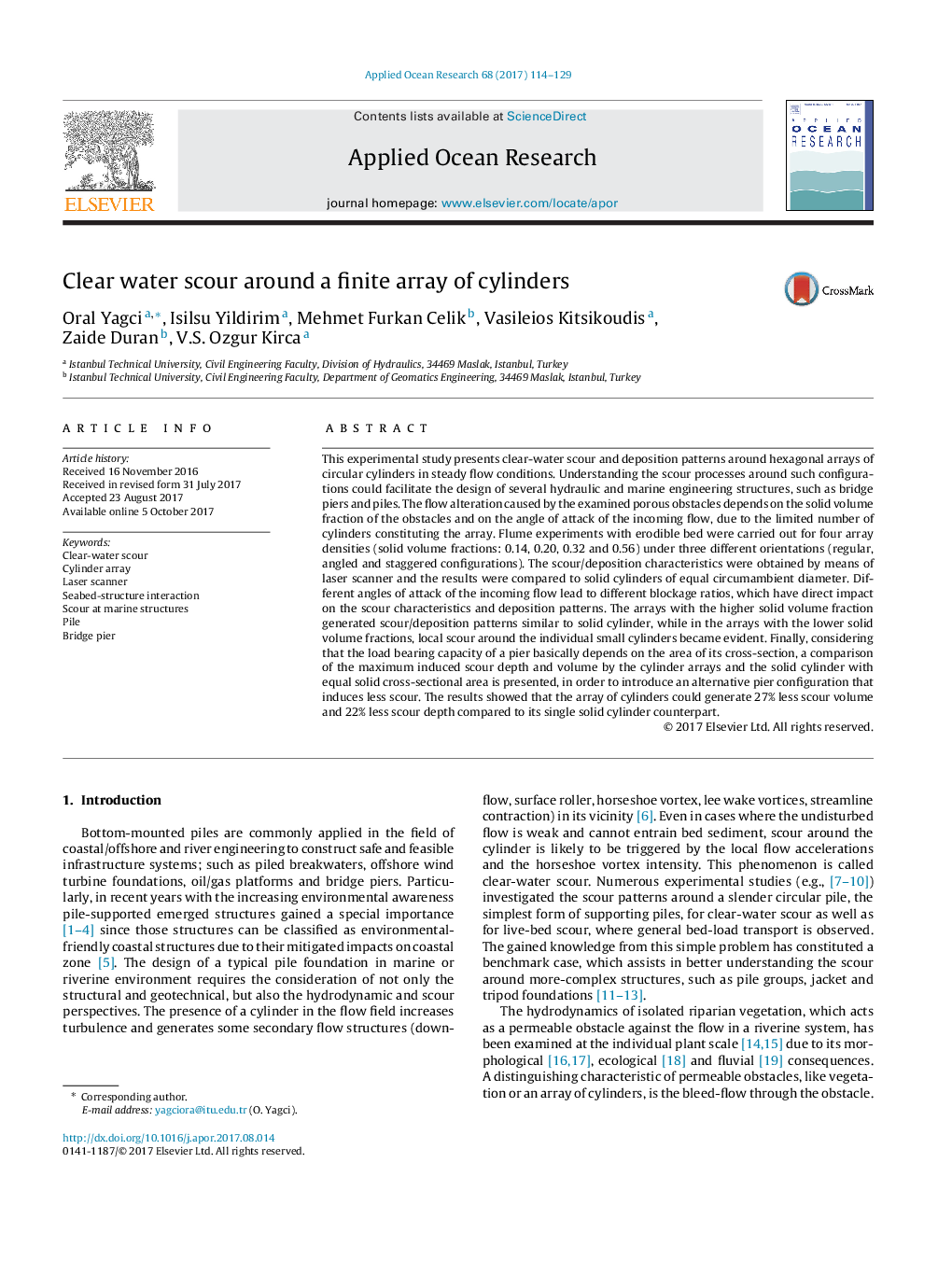| Article ID | Journal | Published Year | Pages | File Type |
|---|---|---|---|---|
| 5473158 | Applied Ocean Research | 2017 | 16 Pages |
Abstract
This experimental study presents clear-water scour and deposition patterns around hexagonal arrays of circular cylinders in steady flow conditions. Understanding the scour processes around such configurations could facilitate the design of several hydraulic and marine engineering structures, such as bridge piers and piles. The flow alteration caused by the examined porous obstacles depends on the solid volume fraction of the obstacles and on the angle of attack of the incoming flow, due to the limited number of cylinders constituting the array. Flume experiments with erodible bed were carried out for four array densities (solid volume fractions: 0.14, 0.20, 0.32 and 0.56) under three different orientations (regular, angled and staggered configurations). The scour/deposition characteristics were obtained by means of laser scanner and the results were compared to solid cylinders of equal circumambient diameter. Different angles of attack of the incoming flow lead to different blockage ratios, which have direct impact on the scour characteristics and deposition patterns. The arrays with the higher solid volume fraction generated scour/deposition patterns similar to solid cylinder, while in the arrays with the lower solid volume fractions, local scour around the individual small cylinders became evident. Finally, considering that the load bearing capacity of a pier basically depends on the area of its cross-section, a comparison of the maximum induced scour depth and volume by the cylinder arrays and the solid cylinder with equal solid cross-sectional area is presented, in order to introduce an alternative pier configuration that induces less scour. The results showed that the array of cylinders could generate 27% less scour volume and 22% less scour depth compared to its single solid cylinder counterpart.
Related Topics
Physical Sciences and Engineering
Engineering
Ocean Engineering
Authors
Oral Yagci, Isilsu Yildirim, Mehmet Furkan Celik, Vasileios Kitsikoudis, Zaide Duran, V.S. Ozgur Kirca,
